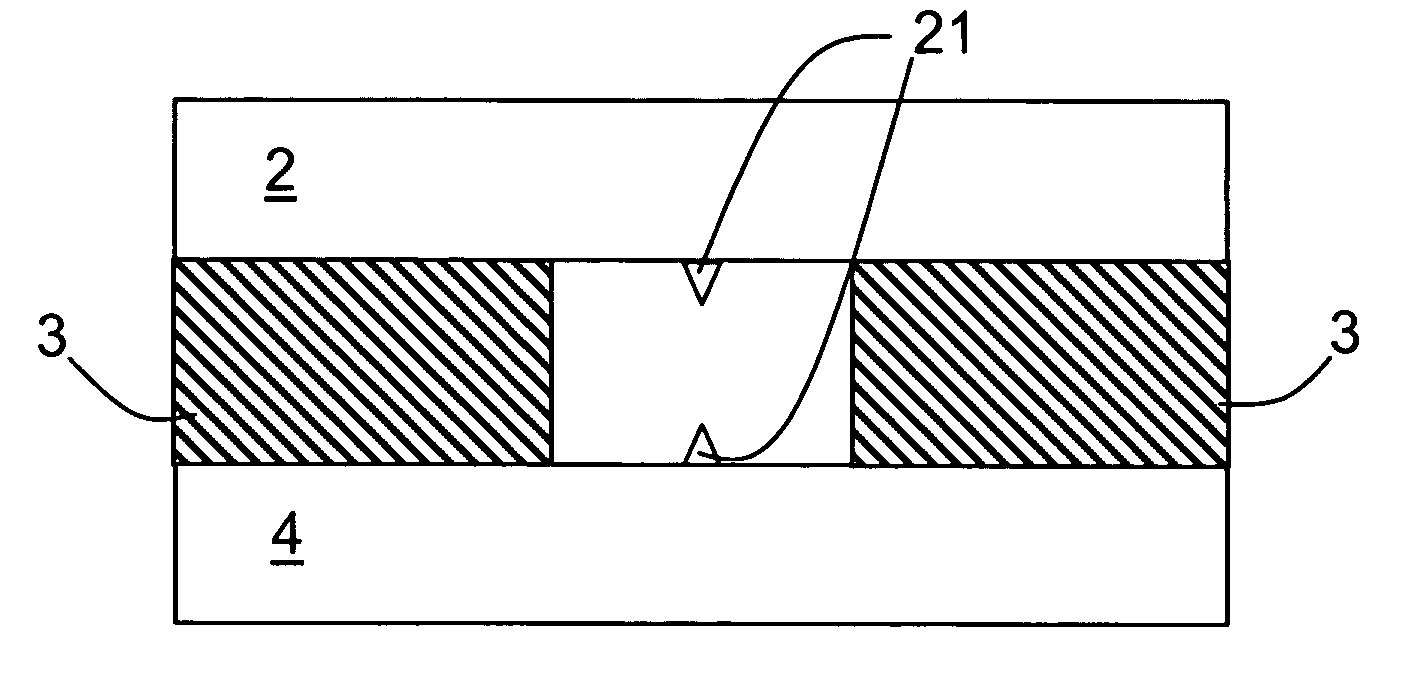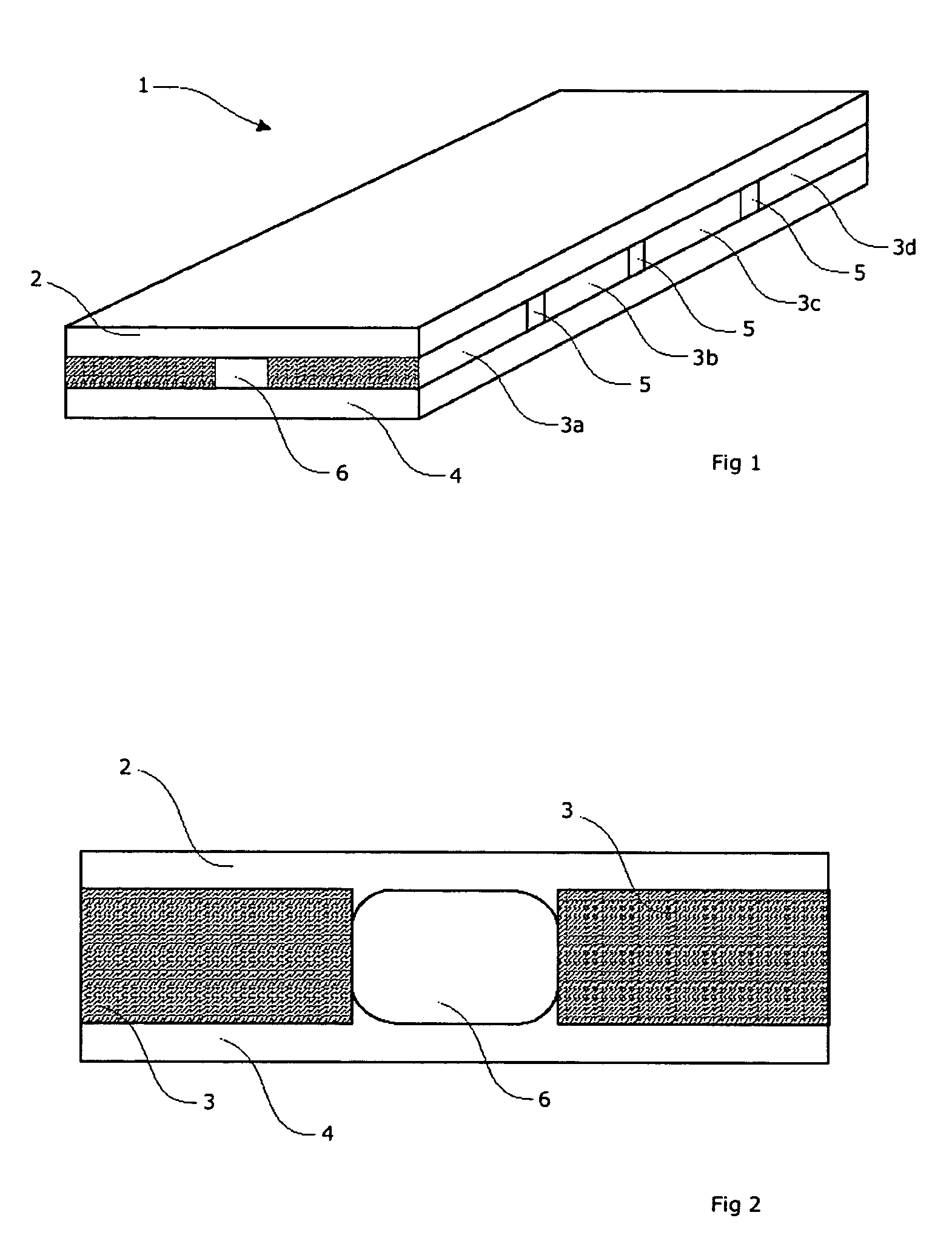Waveguide laser
a laser and waveguide technology, applied in the field of waveguide lasers, can solve the problems of inability to cost-effectively fabricate a typical waveguide structure, inability to meet the requirements of laser transverse mode characteristics, and difficulty in achieving sufficient accuracy of waveguides, etc., to achieve the effect of increasing laser power and/or efficiency
- Summary
- Abstract
- Description
- Claims
- Application Information
AI Technical Summary
Benefits of technology
Problems solved by technology
Method used
Image
Examples
Embodiment Construction
[0030]The following description of exemplary embodiment(s) is merely illustrative in nature and is in no way intended to limit the invention, its application, or uses.
[0031]FIG. 1 shows a slab waveguide laser 1 according to an exemplary embodiment of the present invention, comprising a top or upper electrode 2 and a bottom or lower electrode 4. The upper and lower electrodes, 2 and 4 respectively, can have variable shape (e.g., planar, variable thickness, curved . . . ). Sidewalls 3a, 3b, 3c, and 3d are sandwiched between the upper electrode 2 and the lower electrode 4 and can be separated by small gaps 5. The width and thickness of the sidewalls are shown shaded. The length of the sidewalls are not shaded.
[0032]The sidewalls 3a, 3b, 3c, and 3d and the upper and lower electrodes 2 and 4 respectively can form a waveguide 6. There can be gaps 5 between the sidewalls 3a, 3b, 3c, and 3d or no gap. In exemplary embodiments of the present invention there can be any number of gaps. In addi...
PUM
 Login to View More
Login to View More Abstract
Description
Claims
Application Information
 Login to View More
Login to View More - R&D
- Intellectual Property
- Life Sciences
- Materials
- Tech Scout
- Unparalleled Data Quality
- Higher Quality Content
- 60% Fewer Hallucinations
Browse by: Latest US Patents, China's latest patents, Technical Efficacy Thesaurus, Application Domain, Technology Topic, Popular Technical Reports.
© 2025 PatSnap. All rights reserved.Legal|Privacy policy|Modern Slavery Act Transparency Statement|Sitemap|About US| Contact US: help@patsnap.com



